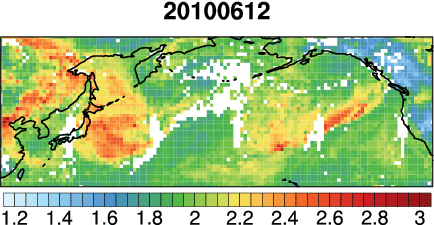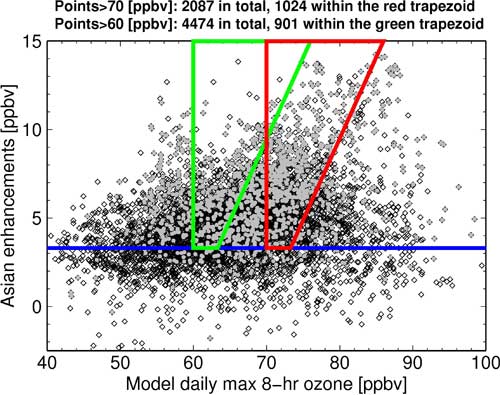February 24th, 2012
Key Findings
- Asian fossil fuel emissions can contribute as much as 20 percent of total ozone during springtime pollution episodes in western U.S. surface air.
- Near real-time satellite observations of Asian pollution plumes could serve as an early-warning indicator, with a lead time of 1 to 3 days, of Asian pollution influence on western US air quality.
- A new high-resolution (~50×50 km2) version of GFDL’s AM3 global chemistry-climate model captures dynamic variability of ozone in upper air and surface measurements, a major improvement upon previous models
Meiyun Lin, A. M. Fiore, L. W. Horowitz, O. R. Cooper, V. Naik, J. Holloway, B. J. Johnson, A. M. Middlebrook, S. J. Oltmans, I. B. Pollack, T. B. Ryerson, J. X. Warner, C. Wiedinmyer, J. Wilson, B. Wyman. Journal: Journal of Geophysical Research, 117, D00V07, doi:10.1029/2011JD016961
Summary
As Asian countries develop, they are emitting more ozone precursors that pollute surface level air. Many studies have documented this pollution being carried by air currents to the western United States. To determine the extent to which this pollution is affecting air quality in the western U.S., we analyzed balloon soundings, aircraft, surface and satellite measurements from May through June 2010 using a new global high-resolution chemistry-climate model. Our findings indicate that Asian pollution contributes as much as 20 percent of total ozone during springtime pollution episodes in western U.S. surface air.
Current guidelines from the Environmental Protection Agency dictate that surface level air should have no more than 75 parts per billion (8 hour average) by volume of ozone. Although local pollution plays a large role on days when that standard is not met in Southern California, we estimate that 53% of the instances where that limit was exceeded would not have occurred without the contribution from Asian air pollution.
This research also showed that an index based on satellite observations of Asian pollution plumes could serve as an early warning indicator, with a lead time of 1 to 3 days, of Asian pollution influence on western US air quality.
For this study, Asian pollution contribution is determined by the difference between pairs of GFDL AM3 model simulations, with and without Asian emissions from fossil fuel combustion. The authors note their estimates should be viewed as upper limits due to the non-linearity of ozone chemistry.




